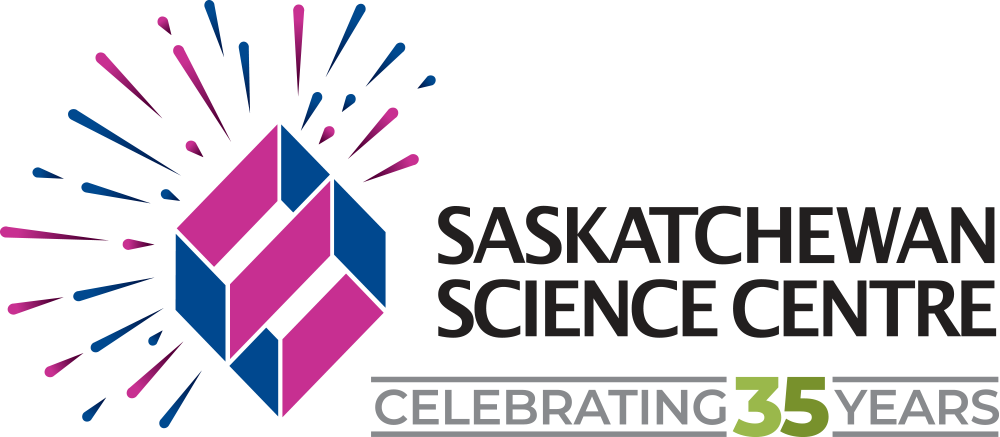
The Saskatchewan Science Centre Online! Check out our hilarious and educational web series “SSCTV”, find downloadable resources, explore other cool science links, and tune into the live BUBOCam!
SSCTV - Candy Glass, Silicon, And Steam!
Q: What do candy glass, silicon, and steam have in common?
A: They’re all covered in this week’s episode of SSCTV!
Q: What do candy glass, silicon, and steam have in common?
A: They’re all covered in this week’s episode of SSCTV!
Jesse explores crystalline and amorphous solids through the power of movie props, Elements ‘R’ Us has an offer you can’t refuse on silicon (not silicone) and Sally Science answers a great question from Brixton!
Do you have a question for Sally Science? Send it to us on our socials, or email a video to rholota@sasksciencecentre.com!
Additional Resource:
https://www.scientificamerican.com/article/shattering-sugar-make-movie-ready-sugar-glass/
Loving this content? Make a donation to the Saskatchewan Science Centre!
#scienceathome #candyglass #movieprops #steam #stem #SaskScienceCentre #AtHomeWithCASC #ScienceChampions #realsciencerealfun
SSCTV - Soil Testing And Flower Dissections
This week’s SSCTV isn’t your garden variety science video - it will really grow on you!
This week’s SSCTV isn’t your garden variety science video - it will really grow on you!
Join Jesse as he explains how to test soil pH (you may want to try it with a pH indicator that you make yourself!), Tommy Tungsten offers a fantastic deal on potassium, and Sally Science answers a question about butterflies.
BONUS - Join Jacklyn for a flower dissection and learn what all the different parts of a lily do!
Loving this content? Consider donating to the Saskatchewan Science Centre!
#SaskScienceCentre #AtHomeWithCASC #ScienceChampions #ScienceAtHome #realsciencerealfun
SSCTV - Owl Pellets And Migration
Have you ever wondered what owls eat? There’s a way to know for sure, and Science Educator Gabby is going to show you how!
Have you ever wondered what owls eat? There’s one way to know for sure, and Science Educator Gabby is going to show you how!
Welcome to the latest episode of Sask Science Centre TV!
This week, we dissect an owl pellet! Learn about what owls eat and how they digest their food. Tommy Tungsten explores oxygen, and Sally Science tells explains bird migration!
Do you have a question for Sally Science? Send it to rholota@sasksciencecentre.com - include a video if you'd like!
Additional Resources
Loving this content? Make a donation to the Saskatchewan Science Centre!
#SaskScienceCentre #AtHomeWithCASC #ScienceChampions #ScienceAtHome #realsciencerealfun
Science At Home - Dissolving Eggshell
How do you make an egg bounce? Simple! Just remove the shell while keeping the semi-permeable membrane intact! Find out how to do that in this post!
How do you make an egg bounce? Simple! Just remove the shell while keeping the semi-permeable membrane intact! Find out how to do that below.
Hey Science FANS!
Today’s science demonstration is particularly EGG-citing. You only need two ingredients and you’ve almost certainly got those ingredients LAYING around. Don’t be chicken to give this one a try. Okay, let’s get cracking.
You’ll need an egg, a glass, and some vinegar. Simply place the egg in the glass and add vinegar to cover. Leave it to soak overnight, and then take a look at the egg. You may need to leave the egg for three days or more. Eventually, the eggshell will dissolve completely, leaving you with a “naked egg.”
Here’s how this works: the shell of an egg is made of calcium carbonate. Vinegar, which is about 4% acetic acid, reacts with the calcium carbonate. As the shell dissolves, it creates water, calcium acetate, and carbon dioxide! You can see the carbon dioxide in the little bubbles that form on the surface of the egg while it soaks.
2 CH3COOH + CaCO3 = Ca(CH3COO)2 + H2O + CO2
What’s left behind is called a semi-permeable membrane. You may have noticed that the naked egg is larger than it was when it was still in the shell. That’s because the membrane allows water to pass through it – because vinegar is 96% water, some of that water has passed through the membrane and into the egg, causing it to grow!
Here’s two interesting things you can do one you have an egg without a shell.
1. Place it in a glass of water that you’ve added food coloring to. The egg with absorb the water and change colour over time!
2. Shine a flashlight through the egg – can you see the yolk?
3. Bounce them! The egg feels kind of like rubber and even bounces like a ball – be careful though! The membrane isn’t very strong, and if you bounce too hard, it will break!
Loving this content? Make a donation to the Saskatchewan Science Centre!
#SaskScienceCentre #AtHomeWithCASC #ScienceChampions #ScienceAtHome #realsciencerealfun
SSCTV - Rockets And Blue Skies
Learn about different kinds of (at-home) rockets with Jesse, explore the element phosphorus with Tommy Tungsten, and Sally Science tells us why the sky is blue!
Welcome to the latest episode of Sask Science Centre TV!
Learn about different kinds of (at-home) rockets with Jesse, explore the element phosphorus with Tommy Tungsten, and Sally Science tells us why the sky is blue!
Do you have a question for Sally Science? Send it to rholota@sasksciencecentre.com - include a video if you'd like!
Loving this content? Make a donation to the Saskatchewan Science Centre!
#SaskScienceCentre #AtHomeWithCASC #ScienceChampions #ScienceAtHome #realsciencerealfun #seeyqr #exploresask #supportlocal #supportlocalyqr
